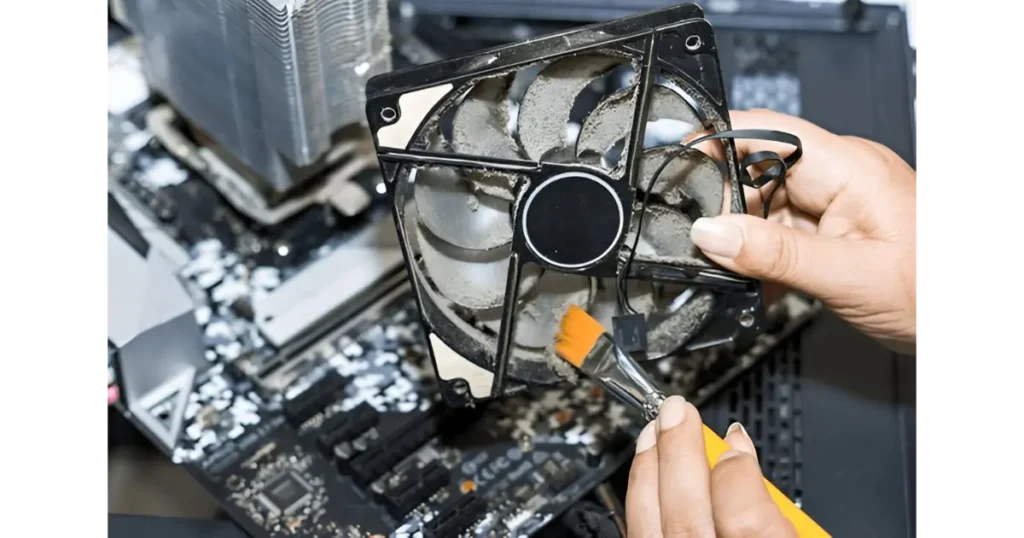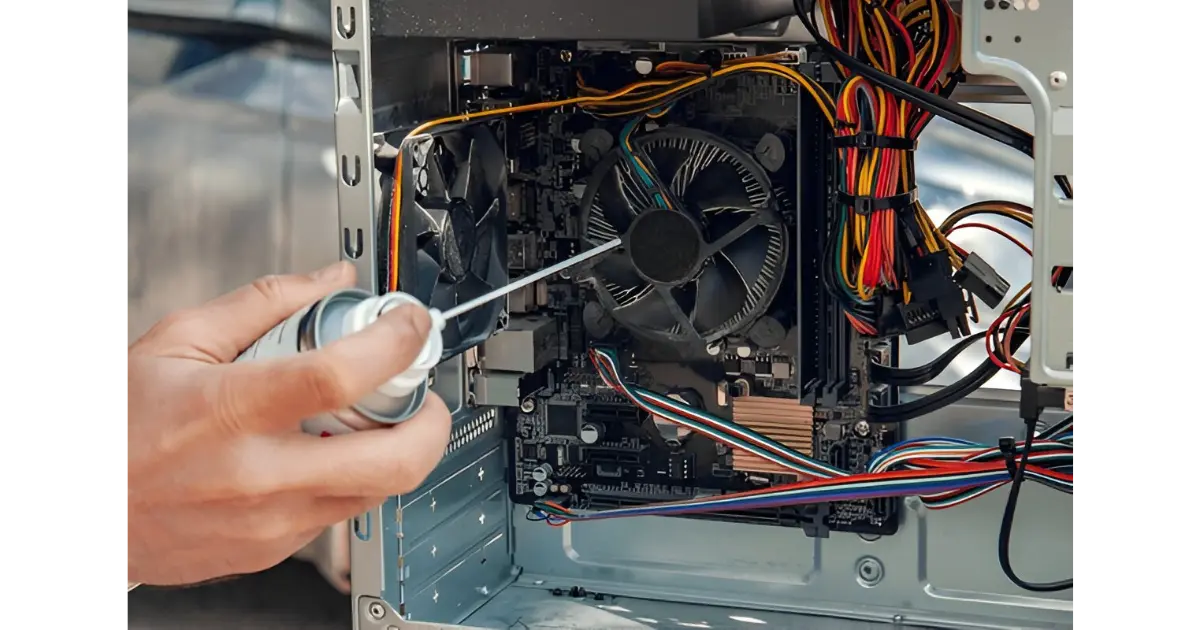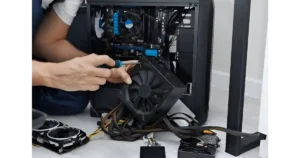To keep your computer running smoothly, regular cleaning is essential. Many think deleting old files or saving large files on external hard drives is enough, but your PC Fan also needs to be physically cleaned. Over time, dust and dirt build-up on fans can make your PC slow and cause internal components to overheat. If it can’t cool down, it may get damaged and require costly repairs.
Removing apps you don’t use helps, but hardware needs attention too. When debris accumulates on fan blades and surrounding areas, they can’t rotate freely or function properly, making cooling less effective. This increases the risk of overheating, which can slow down or even stop your computer from working.
A build-up of dust, dirt, and debris inside your computer isn’t just bad for performance—it can also harm your health. The accumulation of particles creates a breeding ground for bacteria and allergens, which can worsen allergies or respiratory issues. Regular cleaning is essential for both your PC and your well-being.
If your computer is slow or stops working, you might need experts, but some issues you can fix yourself. Simple steps like proper cleaning can extend your PC’s life. For more information, read guides on keeping your system in top shape.
Why Cleaning Your PC Fans is a Must

Prevent Overheating and Improve Performance
Over time, dust can build up inside your PC, causing serious performance issues. One major problem is that your computer becomes heated, making it harder for internal fans to remove heat from the system. If you keep your PC on a desk and away from a dusty floor or pet hair, you can reduce buildup, but regular fan cleaning is still necessary. Without it, trapped dust forces the cooling system to work harder, leading to overheating and possible hardware damage.
Simple Maintenance for Long-Term Benefits
An easy way to help your PC stay in good shape is to clean the fans every 6 to 12 months. This simple step prevents excessive heat buildup and keeps your system running efficiently. A regular cleaning routine is a great way to extend your computer’s lifespan and avoid costly repairs. Whether you use your PC for gaming, work, or daily tasks, keeping the cooling system clean ensures it operates at peak performance.
Types of PC Fans

A computer uses multiple fans to stay cool and prevent overheating. The case fan keeps air flowing inside the system, while the CPU fan helps remove hotter air from the processor. High-performance video card setups need a dedicated fan to prevent heat buildup, especially during intense game sessions. Additionally, the power supply includes its own cooling system to maintain stable performance.
If you hear a loud noise coming from your computer, it could mean your fans need cleaning. Dust accumulation can reduce airflow and impact cooling efficiency. A complete check of each fan ensures your system stays in top shape. Keeping all cooling components clean is essential for long-term reliability and performance.
How to Clean a PC Fan Properly
Keeping your PC fans clean is important to ensure they are working properly and preventing dust buildup. If you don’t clean them regularly, dust and loose particles can clog the mechanism, making it harder for the blades to rotate easily. A simple maintenance routine can help eliminate these problems, improving airflow and keeping your computer cool. If you’re ready to clean your fans, follow these steps to get the job done right.
Steps to Clean Your PC Fan
1. Gather Your Tools
Make sure you have the right tools before starting. You’ll need a cotton swab, isopropyl alcohol, a cosmetic pad, and a compressed air can.
2. Open the Case and Locate the Fan
Carefully open the computer case and find the location of the fan. Check if it is gunked up with dust.
3. Wipe the Blades and Surrounding Area
- Use a cotton swab with a bit of isopropyl alcohol to wipe the blades.
- Dab a cosmetic pad with alcohol and clean the outer and surrounding parts.
4. Blow Out Dust with Compressed Air
- Use compressed air to blow away dust in the area and inside the mechanism.
- If you’re cleaning a case fan, make sure the environment allows the dust to exit rather than getting trapped inside the computer.
5. Reassemble and Check the Fan
- After cleaning, turn your PC back on to make sure everything is sealed and functioning correctly.
- Keep up with a maintenance routine based on your schedule—every 6 to 12 months if your PC is kept off the floor, and every 2 to 3 months if there’s smoke, pet hair, or a dusty climate.
Following these simple steps will keep your PC fans clean, prevent overheating, and help your computer perform at its best.
PC Fan Cleaning Tips
Keeping your PC fan clean is important to prevent overheating and maintain optimal performance. Avoid using a vacuum or hair dryer for cleaning, as they can cause static buildup and discharge into the electronics inside the computer case. Also, never take apart the hard drive or power supply, as it may void warranties and damage important components. Always turn off and unplug your PC from the power source before cleaning to avoid any risks.
Best Ways to Keep Your PC Fan Clean:
- Place your PC on a desk or table instead of bedding or carpet to prevent clogging the fan with dust.
- Keep your computer away from hot areas and direct sunlight to avoid excessive heat buildup.
- Close unnecessary apps and web pages to reduce processor load and prevent the PC from running slowly.
- Invest in dust filters for intake fans to catch a large amount of dust and make the cleaning process easier and less frequent.
Conclusion
Regular PC fan cleaning removes dust, dirt, and debris that cause overheating and performance issues. A clogged fan reduces airflow, making the processor run slow. Always turn off and unplug the power source before cleaning. Use a cotton swab with isopropyl alcohol to wipe the blades and compressed air to blow out loose particles. Keep your PC on a desk, away from direct sunlight and hot areas, and use intake filters to catch dust. A maintenance routine every 6 to 12 months extends your PC’s lifespan and ensures reliable performance.








